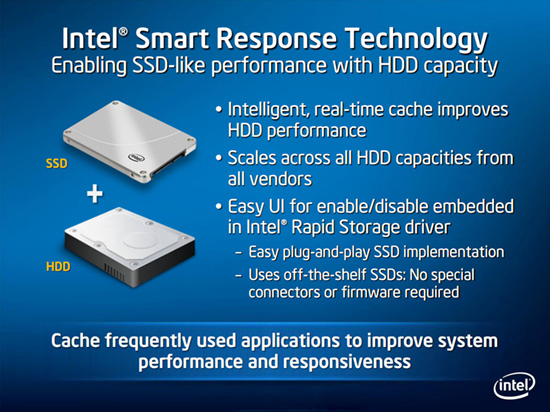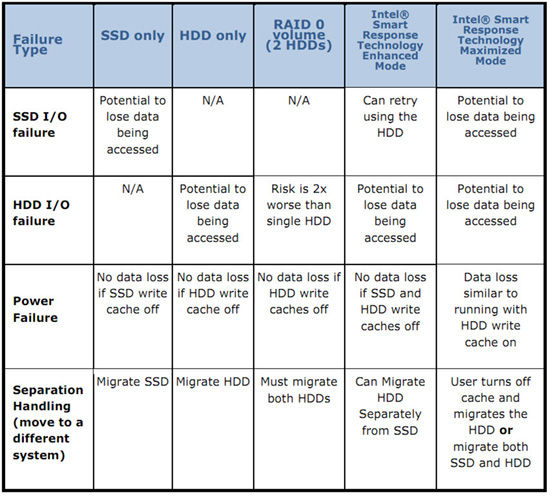Intel Z68 Chipset & Smart Response Technology
Smart Response Technology – Dynamic RAID
How many have been itching to upgrade to an SSD but can’t afford a new large capacity SSD that will fit all of their software? How many more bought a small capacity and/or older generation SSD that slowed to a crawl because it didn’t support TRIM so they yanked it and went back to their HDD? Lots. Good news for each – the Smart Response Technology may be the right solution for you to give you the best of both worlds.

Using the latest version of Rapid Storage Technology drivers (10.5) and adjusting some easy settings in the Intel Control Center you essentially create a RAID configuration which treats the SSD as a cache for the most frequently used data. Access then comes via the faster SSD rather than the slower HDD, increasing performance markedly. Right now, some are thinking – wait, this isn’t new…we’ve seen a version of this before! The voices in your head are correct. Awhile back we had a look at the Seagate Momentus XT Hybrid drive which essentially employs the same concept, albeit all bundled on a single drive.

Since this isn’t a traditional RAID configuration, the majority of the data on the hard drive never makes it to the SSD or only for a short while. However, depending on how you configure the setup, there are some risks as illustrated in the table below that also illustrates some comparisons to traditional configurations. There are two different cache modes – enhanced and maximized. The
enhanced mode carries no incremental risk of data loss
as compared to a single hard drive as all writes go to both the SSD
and HDD. The SSD cache always remains in sync with the
corresponding HDD data. The maximized mode carries more risk but as with most things in life, the higher the risk the greater the reward so performance is improved.

Contrary to what you may think, SRT does not cache whole files but rather according to Intel “it operates on individual blocks of data to increase efficiency of the cache capacity”. Meaning it’s frugal with your SSD space. Frequently accessed data persists on the SSD and superseded as other data usage becomes more prevalent although it’s a little more complex than that. SRT is intelligent and adaptive enough to differentiate between high-value data (application, user, and boot data) and low-value data which doesn’t stand to benefit from caching like files touched through a virus scan for example. All of this speeds up boot times, application loads, and file loads after the first few times they are accessed. As we’ll demonstrate with the benchmarks, it works very well.

Comments are closed.